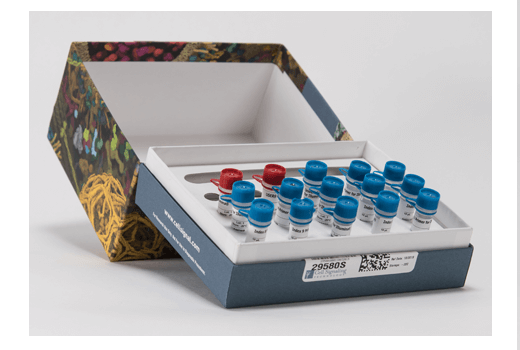 全部商品分类
全部商品分类

 下载产品说明书
下载产品说明书 下载COA
下载COA 下载SDS
下载SDS 用小程序,查商品更便捷
用小程序,查商品更便捷


 收藏
收藏
 对比
对比 咨询
咨询Next generation sequencing (NG-seq) is a high throughput method that can be used downstream of chromatin immunoprecipitation (ChIP) and Cleavage Under Targets and Release Using Nuclease (CUT&RUN) assays to identify and quantify target DNA enrichment across the entire genome. Multiplex Oligos for Illumina Systems (Single Index Primers) (ChIP-seq, CUT&RUN) contains adaptors and primers that are ideally suited for multiplex sample preparation for NG-seq on the Illumina Systems platform. This kit can be used to generate up to 12 distinct, barcoded ChIP-seq or CUT&RUN DNA libraries that can be combined into a single sequencing reaction.
This product is compatible with SimpleChIP Enzymatic ChIP Kit (Magnetic Beads) #9003, SimpleChIP Plus Enzymatic ChIP Kit (Magnetic Beads) #9005, SimpleChIP Plus Sonication ChIP kit #56383, and CUT&RUN Assay Kit #86652. This product is not compatible with SimpleChIP Enzymatic Chromatin IP Kit (Agarose Beads) #9002 and SimpleChIP Plus Enzymatic Chromatin IP Kit (Agarose Beads) #9004 because agarose beads are blocked with sonicated salmon sperm DNA, which will contaminate DNA library preps and NG-seq.

Specificity/Sensitivity



Store all components at -20ºC. This product is stable for 12 months if stored properly.
参考图片





